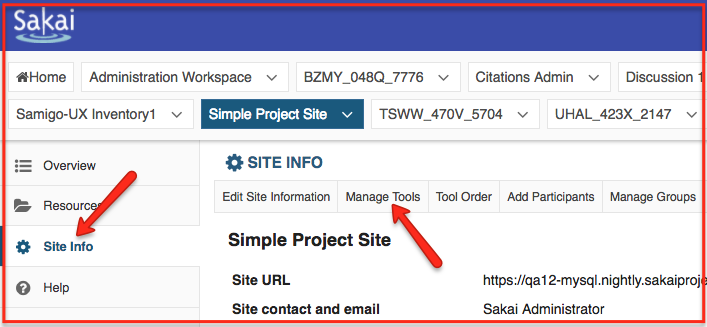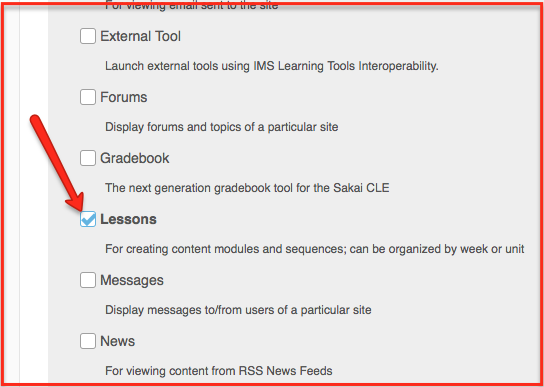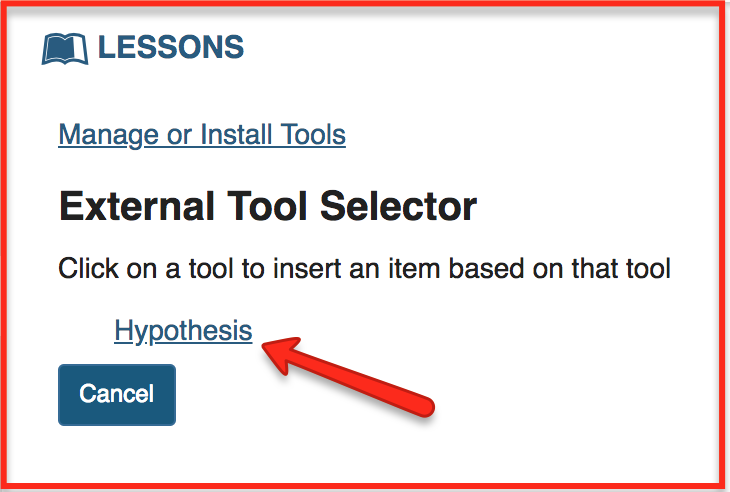Currently, the Lessons tool is the only place where we have been able to add Hypothesis-enabled readings to a Sakai course. We are researching other places in which an external tool like Hypothesis can be added to Sakai. Let us know if you can think of any!
1. Add the Lessons tool to your course site
Some Sakai instances do not enable the Lessons tool by default. If you do not see it in the left navigation menu of your course site, you’ll need to add it manually.
Go to Site Info > Manage Tools:
Check the box next to the Lessons tool:
Scroll to the bottom of the page. Click Continue, and on the next page click Finish.
If you need assistance with adding the Lessons tool to your course site, please consult Sakai’s documentation or your institution’s LMS team.
2. Create Hypothesis-enabled Content Item
Navigate to the Lessons tool and click on the Add Content button at the top of the page:
From the Add Content menu, select Add External Tool:
Select Hypothesis from the External Tool Selector:
Give this Content item a unique Tool Title. Having multiple content items with the same name can cause issues when grading Hypothesis readings.
Click Save and you will be brought back to your Lessons page.
3. Select a Document for Annotation
Click on the title of the Content Item.
Document options

Notes:
PDFs must have optically recognizable text in order to be annotatable in the Hypothesis app. If you can select text in the PDF, no further action is needed. If you can’t select text in the PDF, you’ll need to follow our instructions for how to OCR-optimize a PDF.
After selecting the URL or PDF for your assignment, you may need to refresh the page, or close and re-open the assignment, before you can start annotating.
Click the button that says Enter URL of web page or PDF. On the Enter URL dialog, enter a link to a public web page or PDF. Please note that the content at the link must be publicly viewable (i.e., not behind a login or paywall).

Click the Submit button.
You must upload PDFs to the course first before completing the steps below. The Moodle File Picker does not allow for uploading new documents. You may put the PDFs in folders and the folder structure should be available in the picker.
Highlight the PDF file you wish to use and click the Select button.
The page must be available in the course before completing the steps below.
Highlight the Moodle page you wish to use and click the Select button.
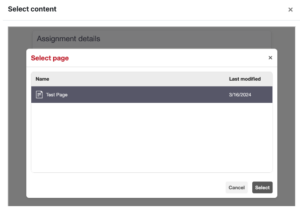
Using a PDF stored in Google Drive within the Hypothesis LMS app will change the sharing settings of the selected file to allow the PDF to be shown to anyone viewing the assignment. The exact setting on the file will be “Anyone with a link can view”. For more information please see our articles on Google Drive sharing settings and using Hypothesis with Google Drive.
Click the button that says Select PDF from Google Drive. You will be asked to select a Google account and/or authorize the Hypothesis LMS App to access Google Drive. To use an institutional Google Drive account you need to already have the ability to share documents with users outside your organization.
Search or browse to select a PDF to use in your reading. You may also click the Upload tab to upload a new PDF to use.
Only files for which you have edit permission are able to be used by Hypothesis.
Click on the file you want to use and then click the Select button.
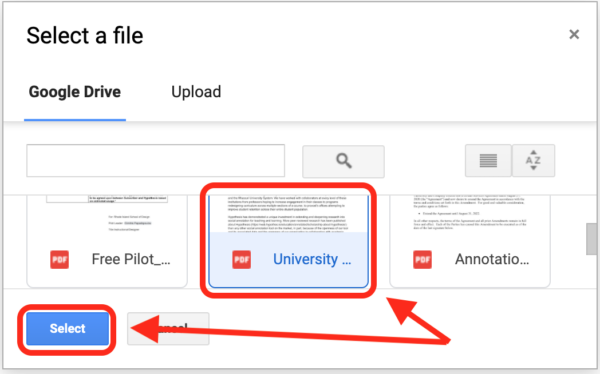
Note: This process will change the sharing permission of the selected Google Drive file to allow the PDF to be shown to anyone viewing the assignment. For more information please see our document about using Hypothesis with Google Drive.
Click the button that says Select PDF from OneDrive. You will be asked to select a Microsoft account and/or authorize the Hypothesis LMS App to access OneDrive. To use an institutional OneDrive account you need to already have the ability to share documents with users outside your organization.
Once logged on, browse to select a PDF to use in your reading. You may also select the Upload option to upload a new PDF to use.
Only files available in “My files” are able to be used by Hypothesis. You will be unable to use PDFs that belong in any Shared Libraries.
Click to select the file you want to use and then click the Open button.
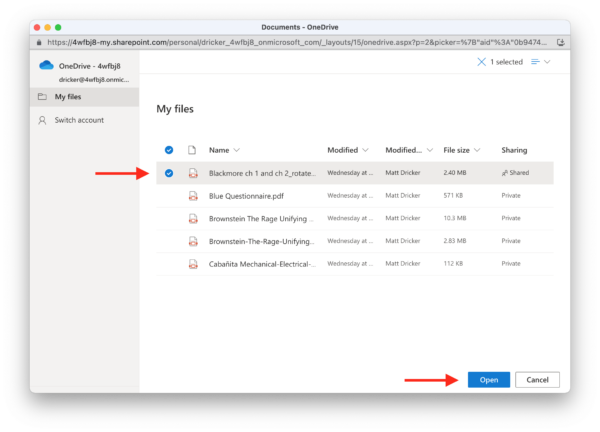
Note: This process will change the sharing permission of the selected OneDrive file to allow the PDF to be shown to anyone viewing the assignment. For more information please see our document about using Hypothesis with OneDrive.
When selecting a text from JSTOR it must be one that your school has license to access, and you must use the JSTOR stable URL. Complete instructions here.
Find and copy the Stable URL of the article you will be assigning from JSTOR.org. The stable URL is listed as part of the content metadata section of the page, usually under the title, author, and journal information.
Select the JSTOR article option in the Hypothesis picker during the assignment creation process and paste the stable URL into the text field. Click the right arrow and then accept JSTOR’s terms of use.

When selecting a text from VitalSource it must be one that your and your students have access to independent of Hypothesis. Complete instructions here.
Open your VitalSource bookshelf, and then find and copy either the text’s VBID or the text’s URL.

Select the VitalSource article option in the Hypothesis picker during the assignment creation process and paste the VBID or URL into the text field. Click the right arrow and then the “Select Book” button.

In the next screen select the starting point of the assignment (for example, you may have a specific assignment start on the book’s 2nd chapter instead of starting at the beginning of the book for every assignment).
With the starting point selected, click the Select button.
Choosing the YouTube option enables an instructor to create an assignment where users can watch the selected YouTube video and annotate its transcript simultaneously. Here’s what a YouTube assignment in Hypothesis looks like:
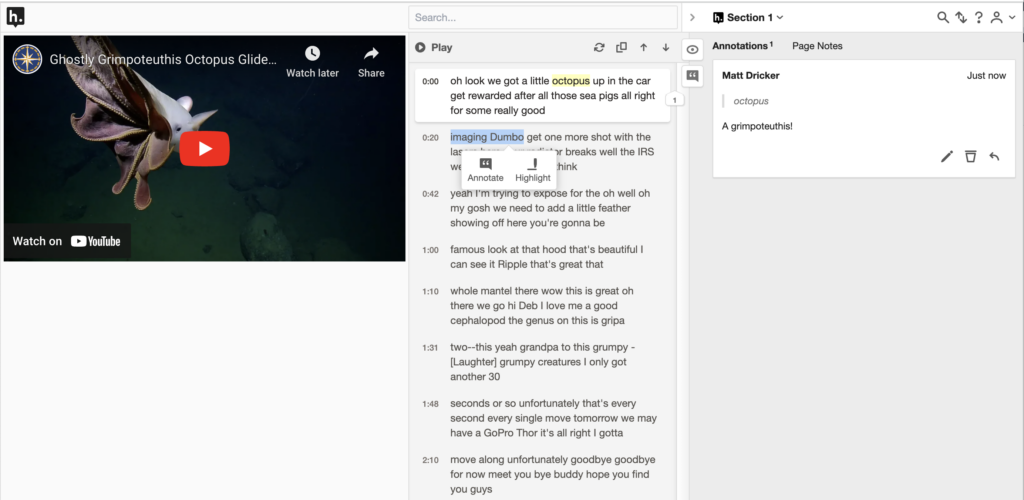
Click here to view the detailed steps on how to set up a Youtube video assignment in Hypothesis.
